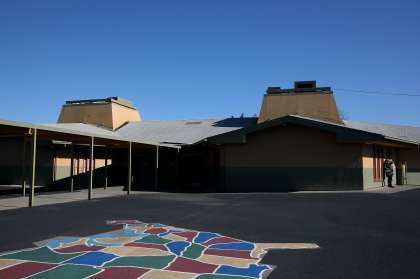
The largest school facility bond in state history appeared headed for defeat Tuesday, falling short of the simple majority needed despite bipartisan support and little formal opposition.
Proposition 13 — unrelated to the same-numbered 1978 tax measure — would push $15 billion in bonds to California’s schools, public universities and community colleges to upgrade facilities and build new ones.
The measure was losing with 56% of voters opposing it, although there were still a significant number of votes still left to count.
It would be the first time voters rejected an education facilities bond in more than two decades.
Most Bay Area counties supported the measure, including San Francisco, where 73% of voters approved of the bond. But voters resoundingly rejected the initiative in many suburban and rural areas across the state.
A loss would leave school and higher education officials struggling to cover the cost of facilities with local bonds alone. The measure would allocate $9 billion to K-12 schools, $4 billion for California’s public universities and $2 billion for community colleges.
The initiative wouldn’t increase individual property taxes, but instead require the state to make annual payments of $740 million to pay back the bonds, including $11 billion in interest.
During the campaign, critics questioned the high cost of repairing or building schools and college classrooms with bonds. Supporters, however, said the state has about a $100 billion backlog in education facilities projects and Prop. 13 would go a long way to addressing that when partnered with local bond money.
Supporters raised more than $9 million to pass the measure, while opponents listed no campaign contributions or spending. The state Legislature placed the measure on the ballot with bipartisan support.
Gov. Gavin Newsom actively campaigned for the measure, making a stop in Oakland to plug the bond on Monday. It appeared it wasn’t enough to overcome what polls found was lukewarm support for the initiative in the weeks and months preceding the election.
Early on, supporters feared that voters would confuse efforts to amend the original Prop. 13 passed in 1978 with the facilities bond measure, but efforts to change the number assigned to the initiative failed. It’s unclear how much that affected the tally Tuesday.
In general, K-12 school districts, which serve 9.2 million students, would have to provide matching funds to qualify for state money. The measure would also reduce the amount local school districts could charge housing developers to help increase classroom capacity.
The University of California and California State University systems would have to prioritize life-safety needs, like seismic upgrades, while also developing plans for affordable housing options for students.
Supporters of the measure included state Superintendent of Public Instruction Tony Thurmond, other education officials and the construction industry.
Opponents included the Howard Jarvis Taxpayers Association.
Jill Tucker is a San Francisco Chronicle staff writer. Email: jtucker@sfchronicle.com Twitter: @jilltucker


